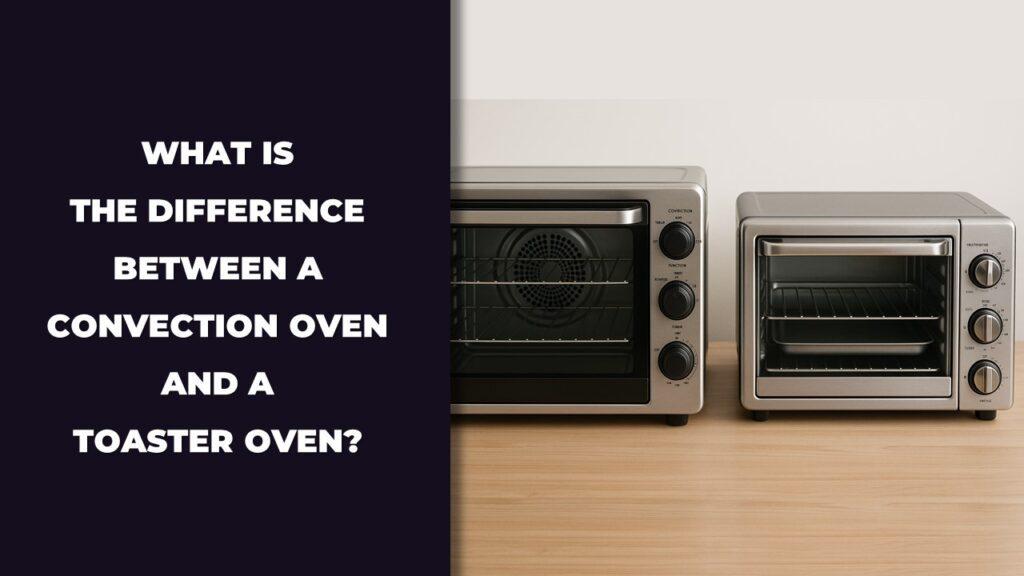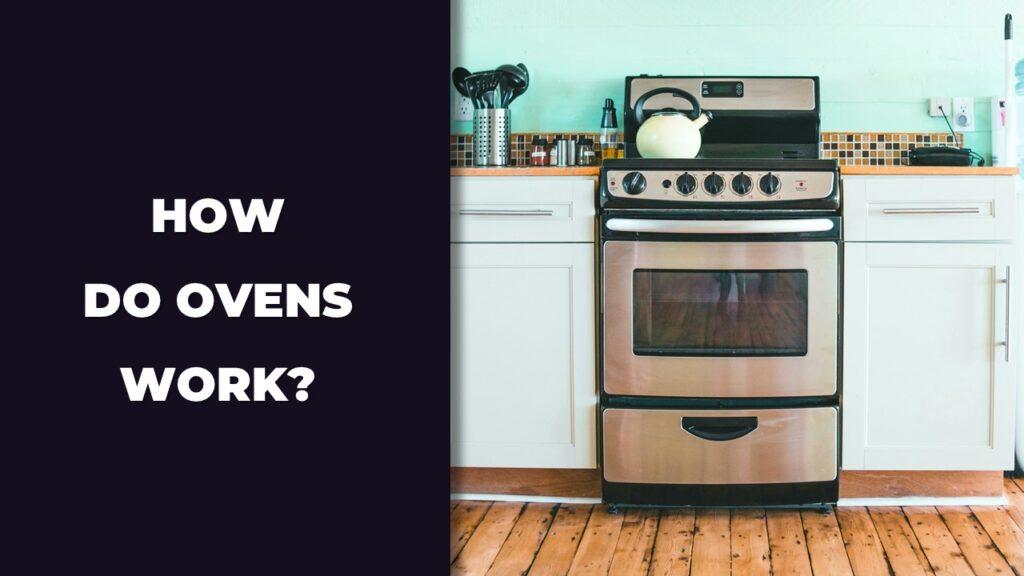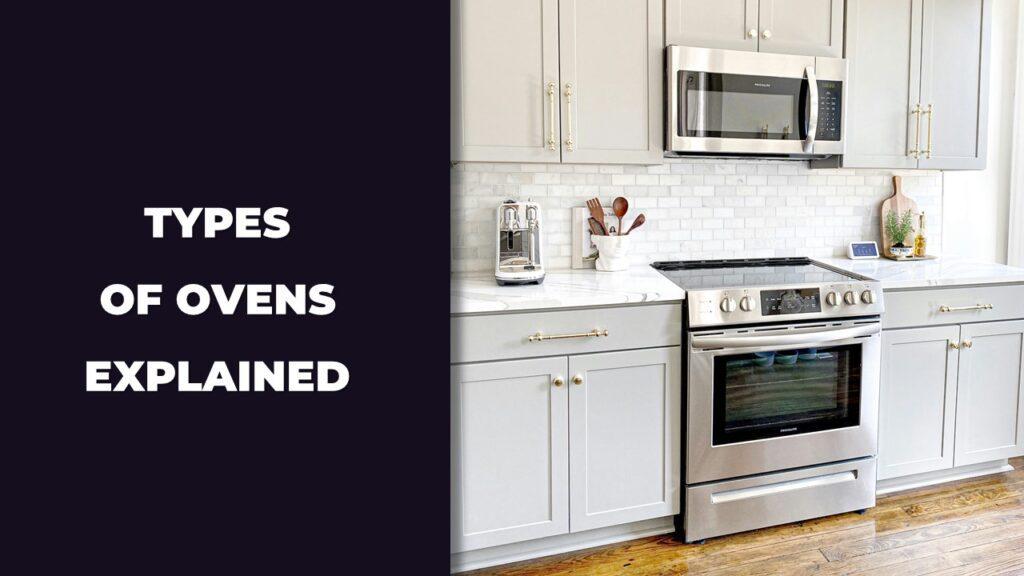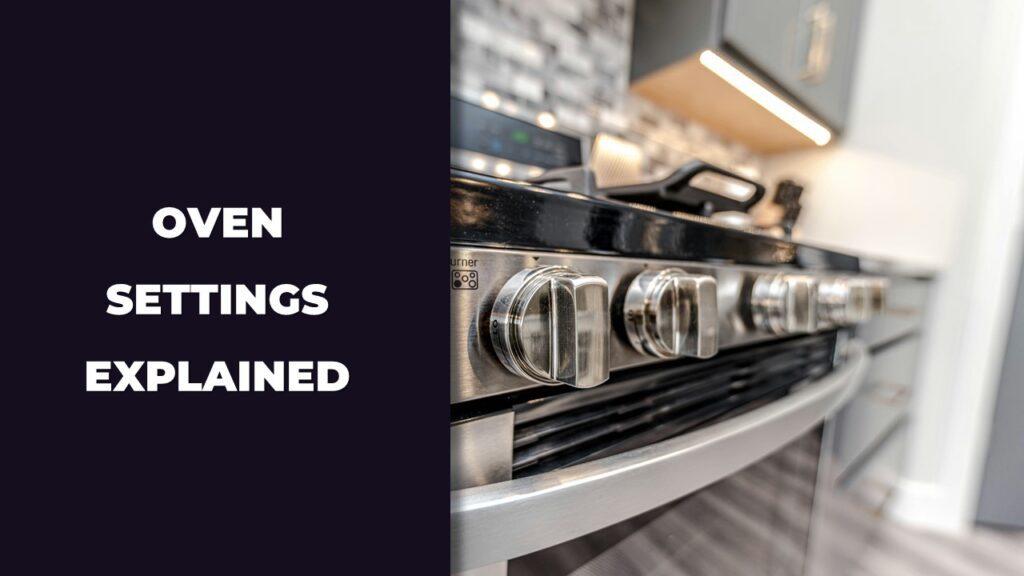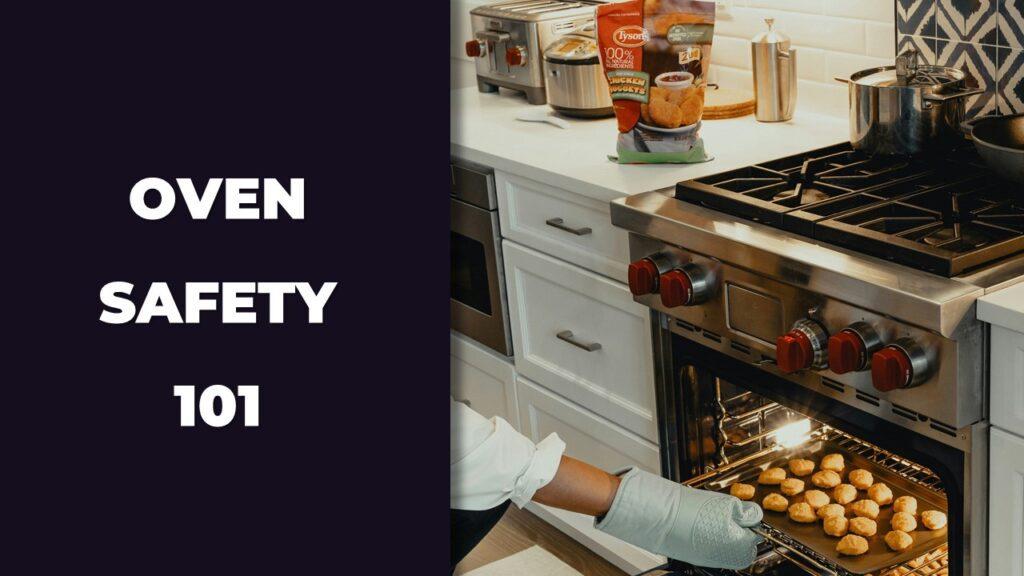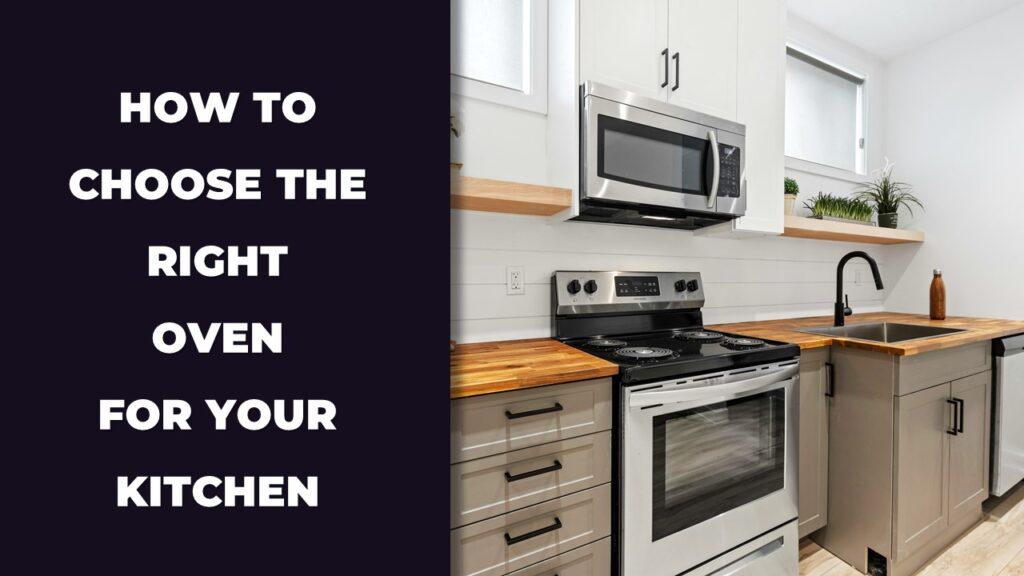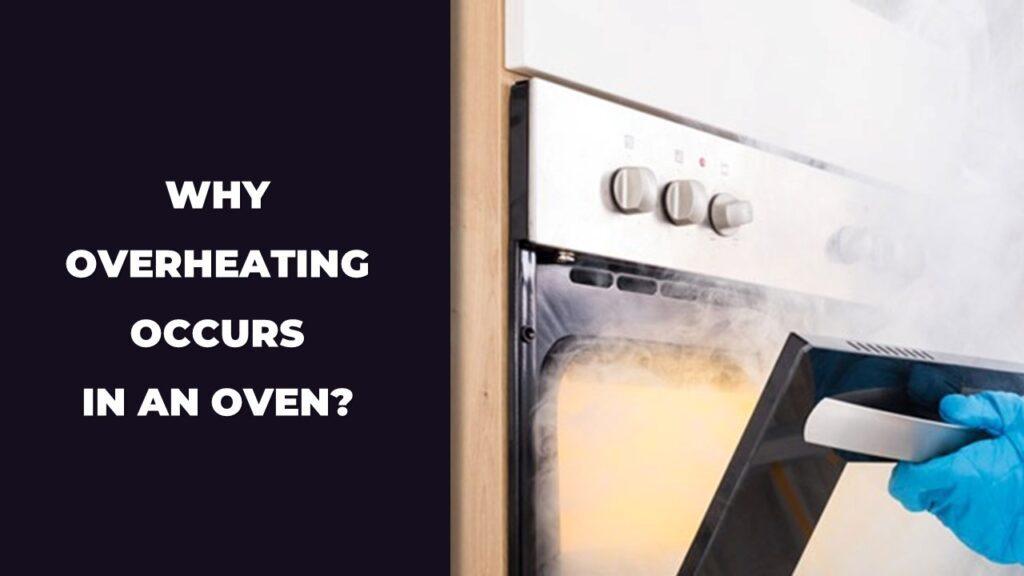
An oven overheats when one or more parts fail to regulate the temperature correctly. This can happen if the thermostat reads the heat wrong, the sensor stops sending signals, the heating element keeps running, or airflow is blocked by grime or poor rack placement. Each of these parts plays a role in keeping your oven’s heat steady, and when one goes off track, things heat up more than they should.
We’ll walk through the common reasons your oven might be getting too hot, how to spot the warning signs early, and what you can do to fix or prevent it.
What Happens When an Oven Overheats?
When your oven overheats, it goes beyond the temperature you set. That can lead to overcooked or burnt food, a hot oven exterior, and even damage to parts like the control board or heating elements. It usually means something inside isn’t regulating the heat properly, like a faulty thermostat, sensor, or fan.
Here’s what you might notice:
- Food cooks too fast or burns before the timer goes off
- The oven takes forever to cool down after use
- The outer door or nearby cabinets feel hotter than normal
- A burnt smell fills the kitchen even when food looks fine
These aren’t just small annoyances. Overheating can damage your oven’s electronics over time and pose a safety risk if left unchecked. If your meals keep turning out wrong even when you follow the recipe, your oven might be the real problem, not you. Catching these signs early can save both your dinner and your appliance.
Main Reasons Why Overheating Occurs in an Oven
The main reasons an oven overheats are usually tied to faulty parts that control heat or airflow. If any of these components fail or misread the temperature, your oven can keep heating past what you’ve set. Here are the most common causes:
- Faulty temperature sensor misreading the oven’s internal heat
- Thermostat problems or poor calibration
- Damaged or stuck heating elements
- Malfunctioning control board or selector switch
- Cooling fan not running or blocked
- Loose or broken thermostat knob (in analog models)
Each of these problems affects how your oven handles heat. If you’ve been burning meals or feeling too much heat from the outside, one of these parts might be to blame.
Faulty Temperature Sensor
The temperature sensor helps the oven know when it’s reached the heat you set. It works by constantly reading the internal temperature and sending signals to the thermostat or control board. If the sensor is faulty, it might read the oven as cooler than it really is, causing it to keep heating when it shouldn’t.
You might notice your oven cooking food faster than expected or see extreme browning even on low settings. In some cases, the sensor may be misaligned, dirty, or simply worn out from use. It’s usually located at the back wall inside the oven—check if it’s bent, touching a wall, or looks corroded.
Broken Thermostat or Incorrect Calibration
The thermostat is the brain behind temperature regulation. It turns the heating elements on and off based on what the sensor reports. If the thermostat itself is broken, it might not respond correctly or at all. This leads to overheating even if the sensor is working fine.
Older ovens can also drift out of calibration, especially after years of use or a move. That means the oven shows one temperature but heats to another. A simple test with an oven thermometer can help reveal if recalibration is needed. If recalibration doesn’t help, the thermostat likely needs to be replaced.
Damaged or Shorted Heating Elements
Heating elements are responsible for generating the heat. They sit at the top, bottom, and sometimes the back of your oven. If they’re cracked, loose, or shorted, they might keep running without stopping—even if your thermostat says it’s time to shut off.
Signs of a bad heating element include uneven cooking, glowing red elements long after preheat, or food that burns no matter the setting. Before checking the elements, always unplug the oven or turn off the power at the breaker to avoid electric shock.
Malfunctioning Control Board or Selector Switch
The control board or selector switch manages your oven’s entire heating cycle. It receives signals from the thermostat and sensor and tells the heating elements what to do. If there’s a short or damaged relay on the board, it can ignore these signals and keep heating uncontrollably.
This issue is more common in newer digital ovens. You may notice the oven keeps heating even after it’s off or the controls don’t respond properly. Diagnosing this usually requires professional tools, but if all other parts seem fine, this is worth looking into.
Cooling Fan Not Working Properly
Many ovens have internal fans to help move air and cool down the control panel and electronics. If the fan stops running or gets blocked by grease, heat can build up inside. This can cause not only overheating but also damage to the wiring or controls over time.
Listen for the fan during preheating or after cooking. If you don’t hear it—or it sounds slow or rattly—it could be stuck or failing. Cleaning the blades might help, but if the fan motor is dead, it needs to be replaced.
Loose or Cracked Thermostat Knob (Analog Models)
If your oven has a manual knob instead of digital controls, this part may be the issue. A loose or cracked knob can throw off the actual temperature settings. You might think you’ve set 350°F, but the oven is really heading toward 400°F or more.
It’s a small part, but it can cause big problems. Check the knob for cracks or if it wobbles when you turn it. Replacements are easy to find and install and can save you from burning more meals.
External Factors That Can Lead to Overheating
Oven overheating isn’t always caused by faulty parts. Sometimes, simple external issues like blocked vents, bad rack placement, or using the wrong liners can trap heat inside and push the temperature higher than intended. These problems often go unnoticed but can quietly ruin your cooking and wear down your oven.
Blocked or Dirty Oven Vents
Oven vents allow hot air to escape and cooler air to flow in. If the vents are clogged with grease, food debris, or grime, heat can’t escape properly. That trapped heat builds up and leads to overheating, even if your oven’s internal parts are working fine.
A blocked vent can also create hot spots and uneven cooking. Always keep a few inches of space around the vent area and wipe down the inside regularly. Use a soft cloth or brush to gently clean around vent openings.
Improper Rack Placement or Overcrowding
Where you place the racks and how you load the oven matters more than people think. Racks too close to the heating elements or too many trays stacked tightly together can block airflow, making it harder for the oven to regulate heat evenly.
If air can’t circulate, it builds up in certain spots, causing some areas to overheat. Try using the center rack for even heat distribution, and leave space between trays and the oven walls. One overcrowded batch can throw off your whole bake.
Use of Foil or Liners That Reflect Heat
Lining the bottom of your oven or covering racks with aluminum foil might seem like a good way to catch spills, but it often backfires. Foil reflects heat back toward the elements and can block vents, throwing off the temperature balance.
Instead of foil, place a baking tray on the lower rack to catch drips. That way, you protect your oven and still let it breathe.
How to Test If Your Oven Is Overheating
The easiest way to check for oven overheating is to compare your oven’s temperature reading with an oven-safe thermometer. If the oven is running hotter than the number you set, that’s a clear sign something’s off.
Try these steps to test accurately:
- Place a manual oven thermometer in the center of the middle rack
- Preheat your oven to a set temperature (like 350°F)
- Wait 15–20 minutes after the oven beeps or says it’s ready
- Check the thermometer reading—if it’s more than 15°F higher than what you set, your oven may be overheating
- Test a few more times to make sure it’s not a one-off result
If the numbers are consistently too high, it’s time to look at recalibration or repairs.
How to Fix and Prevent Oven Overheating
Fixing an overheating oven depends on what’s causing it—some issues are quick DIY jobs, while others need a technician. The good news is, most problems give early clues if you know what to look for. And a few regular habits can help prevent the issue altogether.
Easy DIY Checks First
Before calling for help, do a few simple things:
- Clean the oven vents and fan blades
- Check the temperature sensor for grime or misalignment
- Make sure the racks aren’t too close to the heating elements
- Remove any foil or heavy liners that could block heat flow
- Use an oven thermometer to test for actual temperature accuracy
These steps won’t cost much and can rule out small problems before they turn bigger.
When to Recalibrate Your Oven
If your oven consistently runs hot by 15–25°F, recalibration might fix the issue. Many electric ovens with digital controls have a built-in calibration option in the settings menu. For manual knob models, the process involves adjusting the screw behind the knob.
Recalibration doesn’t fix broken parts, but it can help if your oven is just slightly off due to age or wear. Always refer to your oven’s manual for the correct steps based on your model.
When to Call a Professional
Call a technician when:
- The control board isn’t responding or shuts off randomly
- Heating elements stay hot even after turning the oven off
- You’ve recalibrated and cleaned, but the oven still overheats
- You smell burning wires or see signs of electrical damage
Sometimes, the problem is deeper than what you can fix on your own. A pro can test each part safely and replace what’s needed without guesswork.
Special Considerations For Gas Vs Electric Ovens
Gas and electric ovens can both overheat, but the reasons behind it can differ slightly. Electric ovens often overheat due to thermostat, sensor, or heating element issues, while gas ovens may overheat if there’s a gas supply imbalance or faulty ignition control. Understanding your oven type helps narrow down the real cause faster.
Here’s what to consider based on the oven type:
- Electric ovens
- Common issues include faulty sensors, broken thermostats, and stuck heating elements
- Electrical surges can damage control boards or relays
- Recalibration is often easier and more precise using digital settings
- Gas ovens
- Can overheat if gas valves are stuck open or the pressure is too high
- Faulty ignition systems may keep burners on too long
- Gas line issues need to be handled by a licensed technician
- May need manual calibration and airflow checks more frequently
Both types benefit from regular checks, but gas ovens carry more safety risks when overheating, so always act fast if you notice strong gas odors or ongoing heat after turning it off.
Maintenance Tips To Avoid Overheating
The best way to avoid overheating problems is to keep your oven clean, watch for small signs early, and test its temperature every few months. A little regular care can go a long way in keeping your oven working the way it should.
Here’s what you can do:
- Clean vents, fan blades, and sensor tips regularly to prevent heat buildup
- Avoid using foil or thick liners that block airflow and reflect heat
- Leave space between racks and dishes to allow even heat circulation
- Use the correct bakeware type and placement to reduce uneven heating
- Test oven temperature with a manual thermometer every 3–6 months
- Recalibrate when you see consistent overcooking or burning even at low settings
- Check for physical damage to knobs, wires, or heating elements after spills or power outages
These habits keep your oven safer, more accurate, and less likely to overheat when you least expect it.
Final Thoughts
Oven overheating can sneak up on you. One day you’re baking cookies, and the next they’re burnt crisp at the edges and raw in the middle. Often, it’s not user error—it’s the oven running hotter than it should because something inside isn’t working right.
Whether it’s a faulty sensor, a blocked vent, or a control board going haywire, catching these issues early can save your appliance and your meals. Learning to spot the signs—like fast browning, long cool-down times, or a hot exterior—gives you a head start on solving the problem.
Regular cleaning, careful rack placement, and a quick thermometer test now and then can go a long way. If your oven feels off, trust your gut. A little troubleshooting today can prevent a costly repair—or worse—down the line.
Related FAQs
Can An Overheating Oven Be Dangerous?
Yes, it can. An overheating oven can damage internal components, trip breakers, or even become a fire risk if left unchecked.
Why Does My Oven Get Hotter After Turning Off?
Residual heat and a faulty control board can cause the oven to continue heating even after it’s turned off. This usually points to an issue with the thermostat or control system.
Is It Normal For The Oven Exterior To Feel Hot?
A warm exterior is expected, but if the oven door, knobs, or nearby cabinets become too hot to touch, it may be overheating or have poor insulation or venting.
How Long Does It Take An Oven To Cool Down?
Most ovens take 30 to 45 minutes to cool completely. If it takes longer, or stays hot for hours, internal components may be malfunctioning.
Can I Still Use My Oven If It’s Overheating?
It’s not recommended. Using an oven that runs too hot can ruin meals and damage the appliance. It’s best to troubleshoot or get it checked first.
How Do I Know If My Oven Is Overheating Or Just Running Hot?
Use an oven thermometer to compare the actual temperature to the set one. A consistent difference of 15°F or more means your oven may be overheating.

At our core, we’re a group of passionate households and gardening tools and appliances users and enthusiasts. We dive deep into the world of tech, especially when it’s about your household or gardening electric items. We try to provide as much value to the readers with our information and how to blog articles as possible. For affiliate articles our honest and transparent reviews of essential tech products are rooted in real-world experience. We take great satisfaction in offering unbiased evaluations, ensuring that you can make informed decisions when investing in your desired techs.

